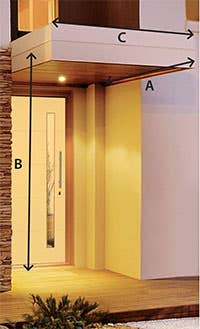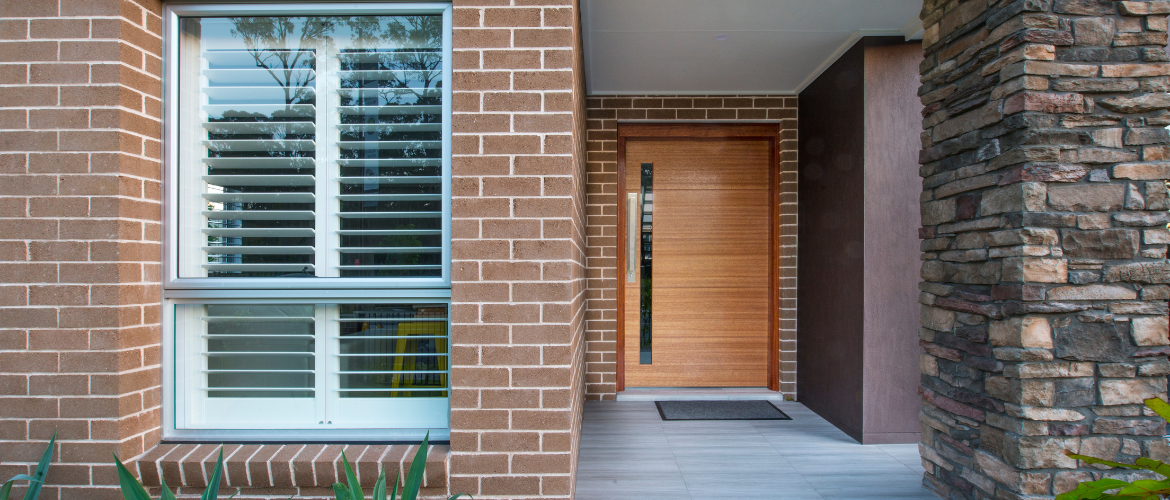Australia's climate can go from one extreme to the next, and it doesn't go easy on entrance doors, especially those made of timber. Unlike steel, aluminium, or fibreglass doors, timber ones are more prone to taking a beating from the elements.
When it comes to protecting your doors from the weather, the location matters. If you're in the tropics, you'll need more overhead protection compared to southern states.
Figuring out the right size for overhead protection isn't always straightforward. It depends on factors like nearby walls and the size of your entry frame. And don't forget about the colour of the door! Dark colours might look cool, but they soak up heat like a sponge, causing your door to warp and age faster.
To help you navigate these considerations, let's take a closer look at the specific requirements for overhead protection based on the location and door orientation. Below, you'll find a breakdown of considerations for the north, south, east, and west, providing valuable insights into tailoring your protection plan to suit your needs.
The chart below is a reference for dimensions A&B.
 |
Climate | Door direction | |||
| North | South | East | West | ||
| Coastal (Hunter Region) | A = 1/2 B | A = B | A = 1/2 B | A = B | |
| Tropical | A = B | A = B | A = B | A = B | |
| Arid | A = B | A = 1/2B | A = B | A = 1/2 B | |
| Mild | A = 1/2 B | A = 1/2 B | A = 1/2 B | A = B | |
Dimension ‘C’ - subject to adjacent walls - minimum width same width as entry frame
Note: Colour choice for your exterior door will also affect weathering. Dark colours absorb heat, accelerating door deterioration, warping and bowing.
Care & Maintenance
- After selecting and purchasing your door, store flat in a dry, well ventilated area prior to installation.
- Your timber door may be affected by changes in temperature, moisture and location.
- Before fitting the door, all six door surfaces should be sealed initially then after installation painted, stained or clear finished with good quality products. Follow the paint manufacturer’s instructions with the correct number of coats on ALL surfaces.
- Light reflective colours are recommended for Entrance Doors to reduce the possibility of bow, twist or warp. Dark colours may void Hume guarantee. Semi gloss finishes are recommended. Paint with a light reflectance value (LRV) finish greater than 50 should be used on External Doors. White - LRV approx, 95 Black - LRV approx 5.
- Use the same colour on all six door surfaces. Different colours may cause doors to warp.
- Entrance Doors require overhead protection (above).
- Location and fitting of your door furniture depends on door construction. Honeycomb core doors have a lock block (piece of timber) located generally on the side with the Hume label and door furniture should be fitted in this location. Solid doors may have door furniture installed at any selected height, either side of door.
- Door maintenance is necessary for long term performance and periodic inspections are recommended. At the first signs of deterioration, your door should be properly
refinished, making sure that all bottom surfaces of the door receive proper resealing and painting. - To clean your door, use a damp cloth. Do not hose or use chemicals or abrasives on your door. Lightly oil hinges and door furniture for optimum performance.



